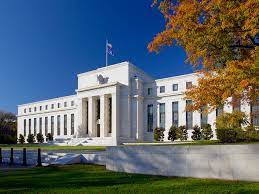Wealth Strategies
Fed Hikes Rates Again, Signals Peak For Now – Wealth Managers React

Here are reactions to the move by the US central bank yesterday.
The US Federal Reserve yesterday raised interest rates again, the 10th consecutive rate rise as the central bank works to curb inflation. It has brought the benchmark federal-funds rate to a range between 5 per cent and 5.25 per cent, the highest in 16 years.
With the collapse of several large US banks, such as Silicon Valley Bank and First Republic, monetary conditions are arguably already tightening considerably. The US central bank has signaled that borrowing costs will peak for the time being.
Focus will now switch to other central banks such as the Bank of England, the European Central Bank, the Swiss National Bank and the Bank of Japan.
Here are reactions to the Fed hike and the commentary from Jerome Powell, Fed chairman.
Gabriele Foà, co-portfolio manager of the Global Credit
Opportunities Fund at Algebris Investments.
The US Federal Reserve hiked the federal funds rate to 5-5.25 per
cent, but signaled that a pause is the most likely scenario in
summer.
The statement emphasizes satisfaction with the cumulative tightening in monetary policy and underscores potential credit tightening from ongoing banking stress in the US. Guidance on the balance of risks is substantially more symmetric than in March and the statement displays very little tightening bias.
Following the decision, we think the bar for further hikes in June and July is very high and assigns a high probability to the hiking cycle having concluded. A moderate hawkish bias remains, so the cuts the market is pricing for the remainder of 2023 are excessive, in our view. We expect the Fed to remain on hold for the rest of the year.
Kambiz Kazemi, chief investment officer at Validus Risk
Management
During the question period, Chair Powell struck a different tone
from previous meetings – a more cautious and at times negative
tone with regards to the prospects for the economy. The banking
crisis and potential resulting credit tightening are also front
and center of the Fed’s risk concerns.
All in all, Powell signaled that the Fed’s hiking action is done for now. However, he also emphasized that its view is that inflation will be readjusting slowly and, as such, the divergence between what the market prices – cuts coming soon – and the Fed’s message is well and alive.
Charles Hepworth, investment director, GAM
Investments
Nearly sixteen years ago, the Federal Funds rate stood at 5.25
per cent on the eve of the Great Financial Crisis. Sixteen years
certainly seems to have passed by very quickly. However, that is
a long time in investment circles and it’s a little comforting
that we find ourselves now back at that same rate level, even
after one of the most aggressive hiking cycles by the Federal
Reserve in many decades. For many investment professionals,
cutting their teeth post the financial crisis is undeniably an
alien environment when all they have ever known is a perpetual
period of low rate.
Today’s hike of 0.25 per cent was in line with expectations. The omission of previous language that “additional policy firming may be warranted” was also what the markets were largely praying for. The Fed left the door ajar just enough to allow for additional rises based on data dependency, not that anyone now believes the central bank would. The slowdown in credit formation, resulting from the banking turmoil, and its impact on growth, will be key determinants that the Fed will be looking at in their data dependency. Further, it’s more than likely that quietly the Fed really does believe we are now at peak rates. How long we stay here is the all-important question. Cuts of up to 0.75 per cent for the second half of the year are currently priced into markets. While Fed Chair Powell et al may want to glide along on pause for a while yet in their battle against inflation, what goes up inevitably must come down. He may find that an accelerating deterioration in the economic landscape will see the Fed having to become very data dependent indeed.
Salman Ahmed, global head of Macro & Strategic Asset
Allocation at Fidelity International.
At today's Fed meeting, the FOMC hiked fund rates by another 25
basis points and indicated a data dependency-driven approach
going forward, though ruled out an unequivocal pause signal.
Chair Powell was balanced in his communication and also indicated
that financial stability remains intact, and conditions have
improved since March. As we have been noting, we are now passing
through the peak of the tightening cycle and the transmission
channel is likely to be dominated by the extent of credit
tightening in the pipeline. Given the current persistence of
inflation and the super tightness in the labor market, a
higher-for-longer signal is likely to come through. However,
whether the Fed can deliver that will depend on the economic
picture and here we think that a cyclical recession remains the
high likelihood scenario.
Ronald Temple, chief market strategist at
Lazard
No surprises here. The FOMC struck an appropriate balance between
taming inflation while avoiding exacerbating stress in the
banking system. Assuming banking issues subside, additional rate
hikes may be needed, but it’s time for a pause to allow the full
effects of tightening to work its way through the economy.